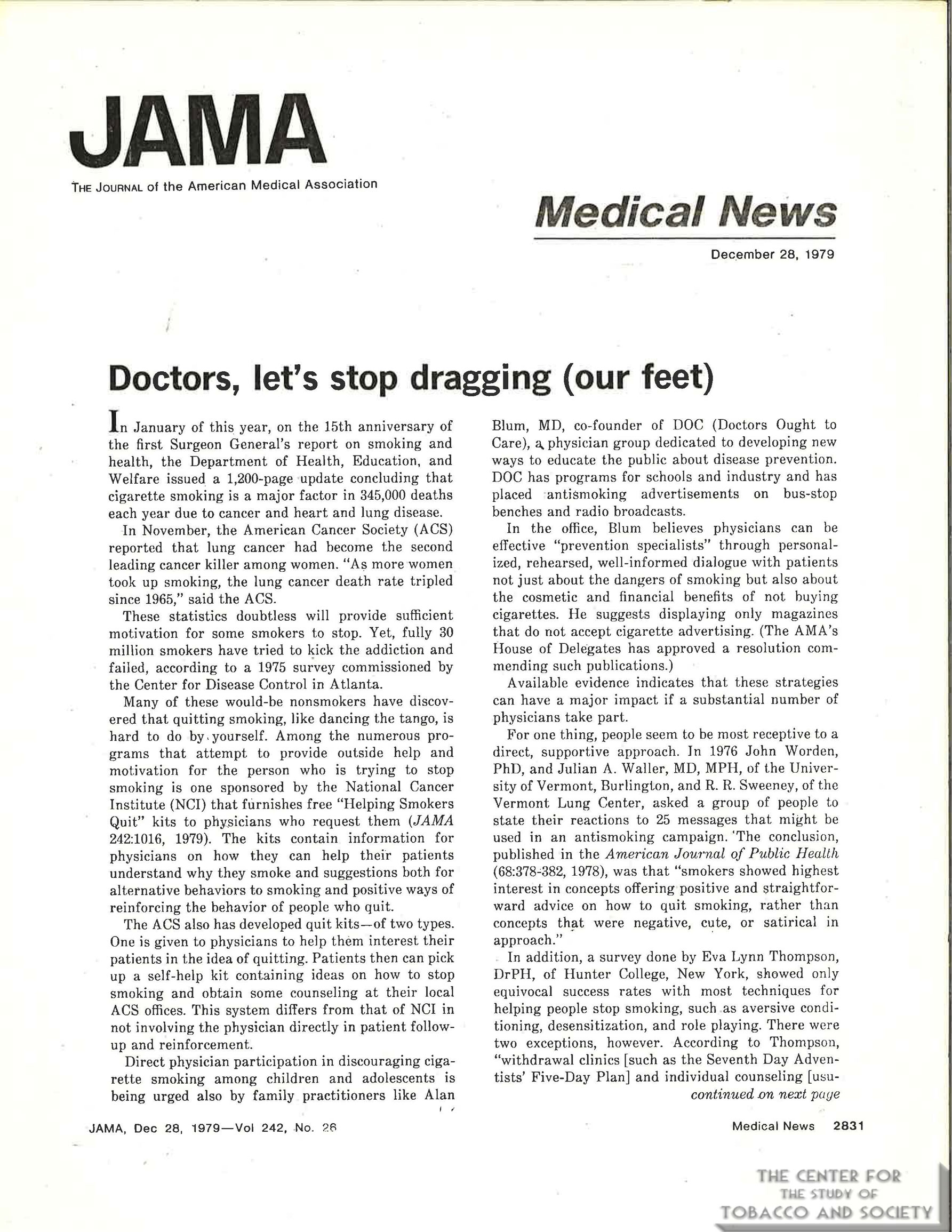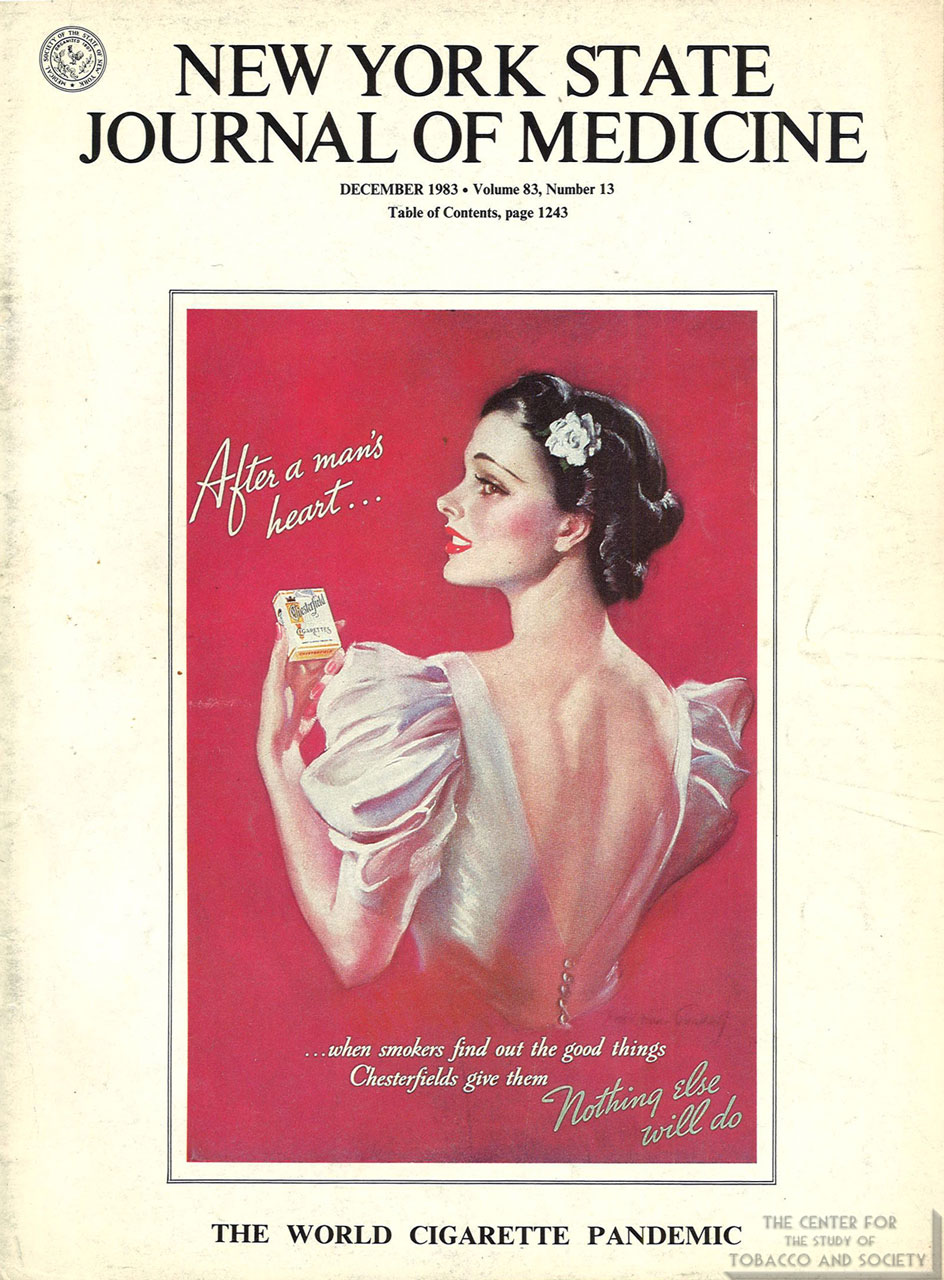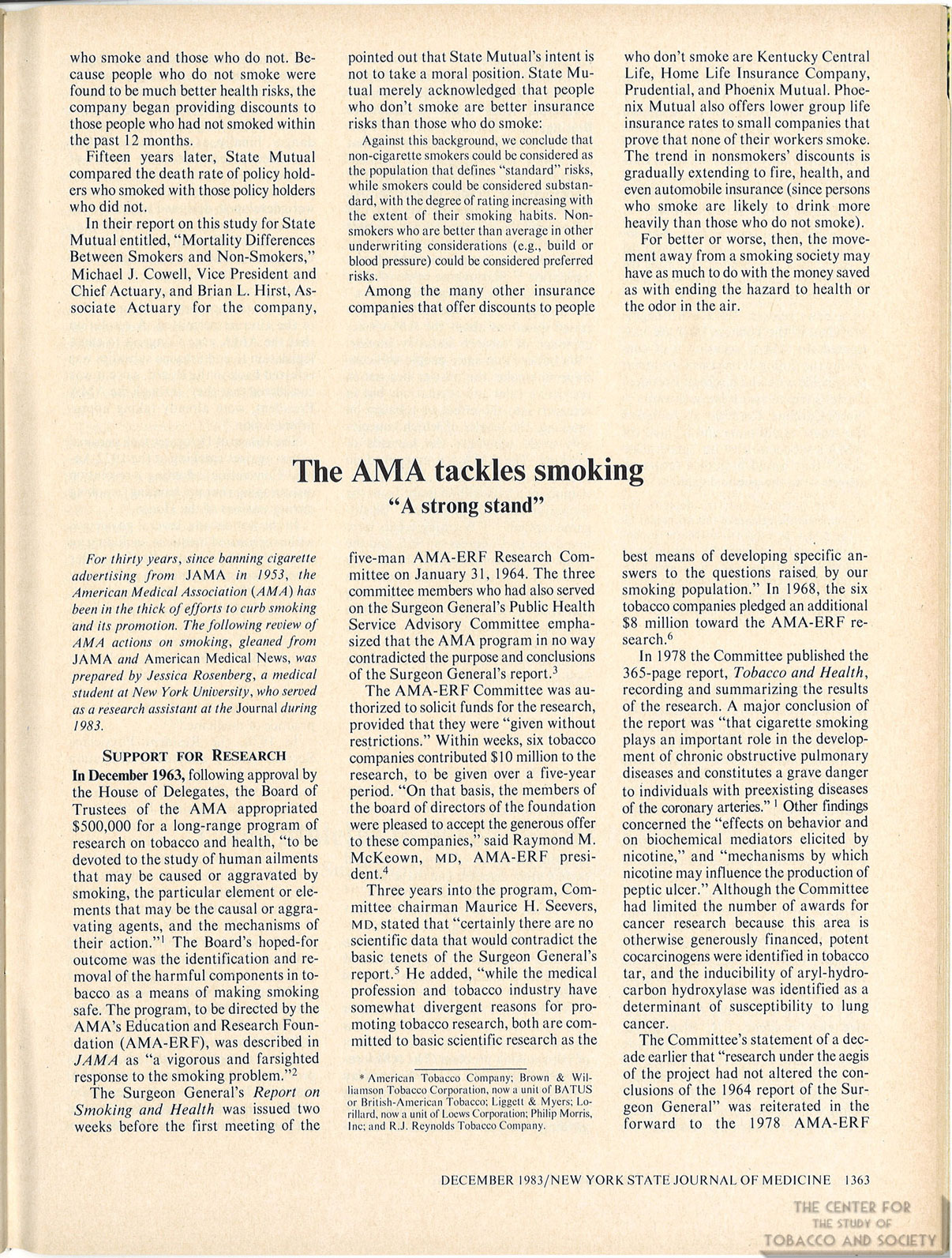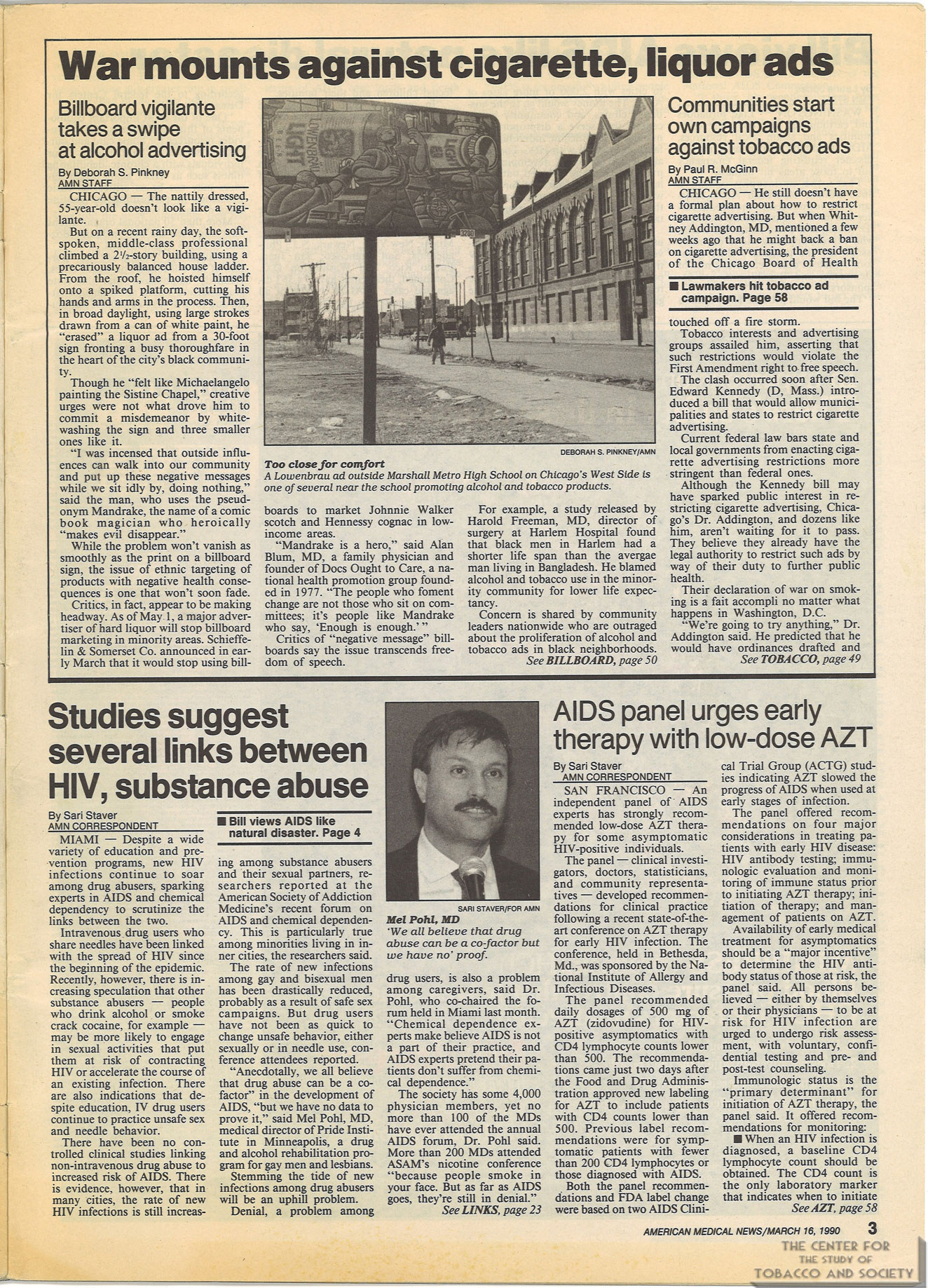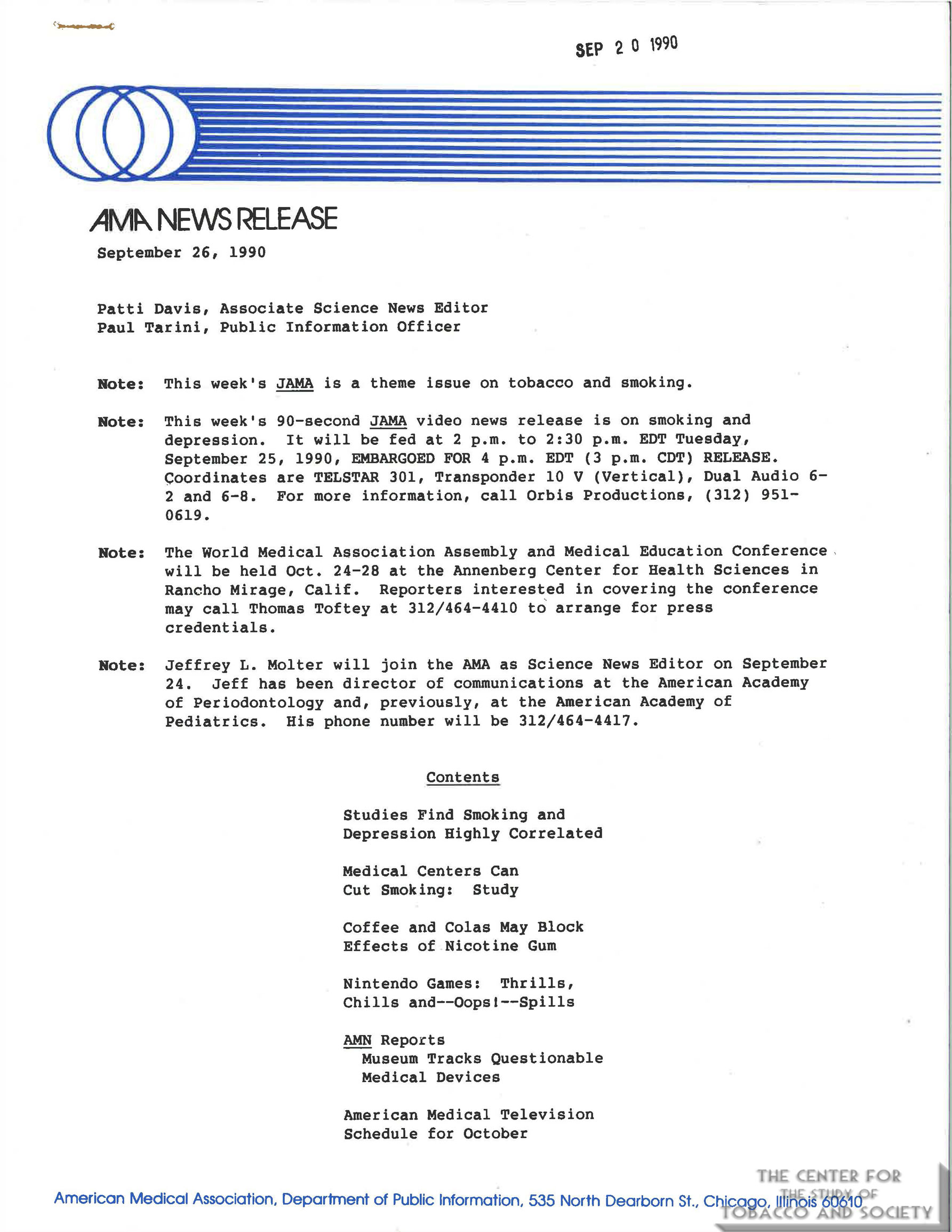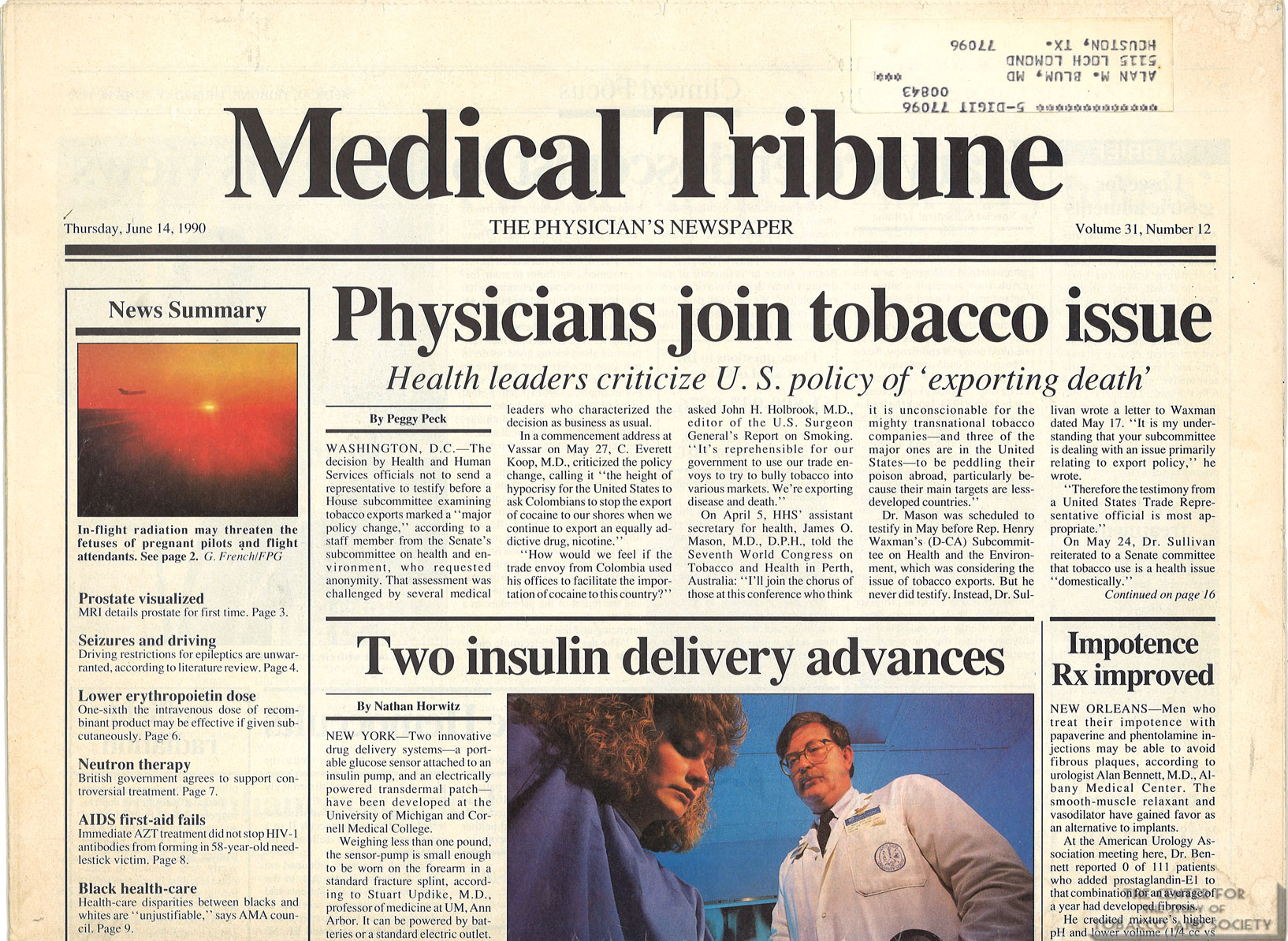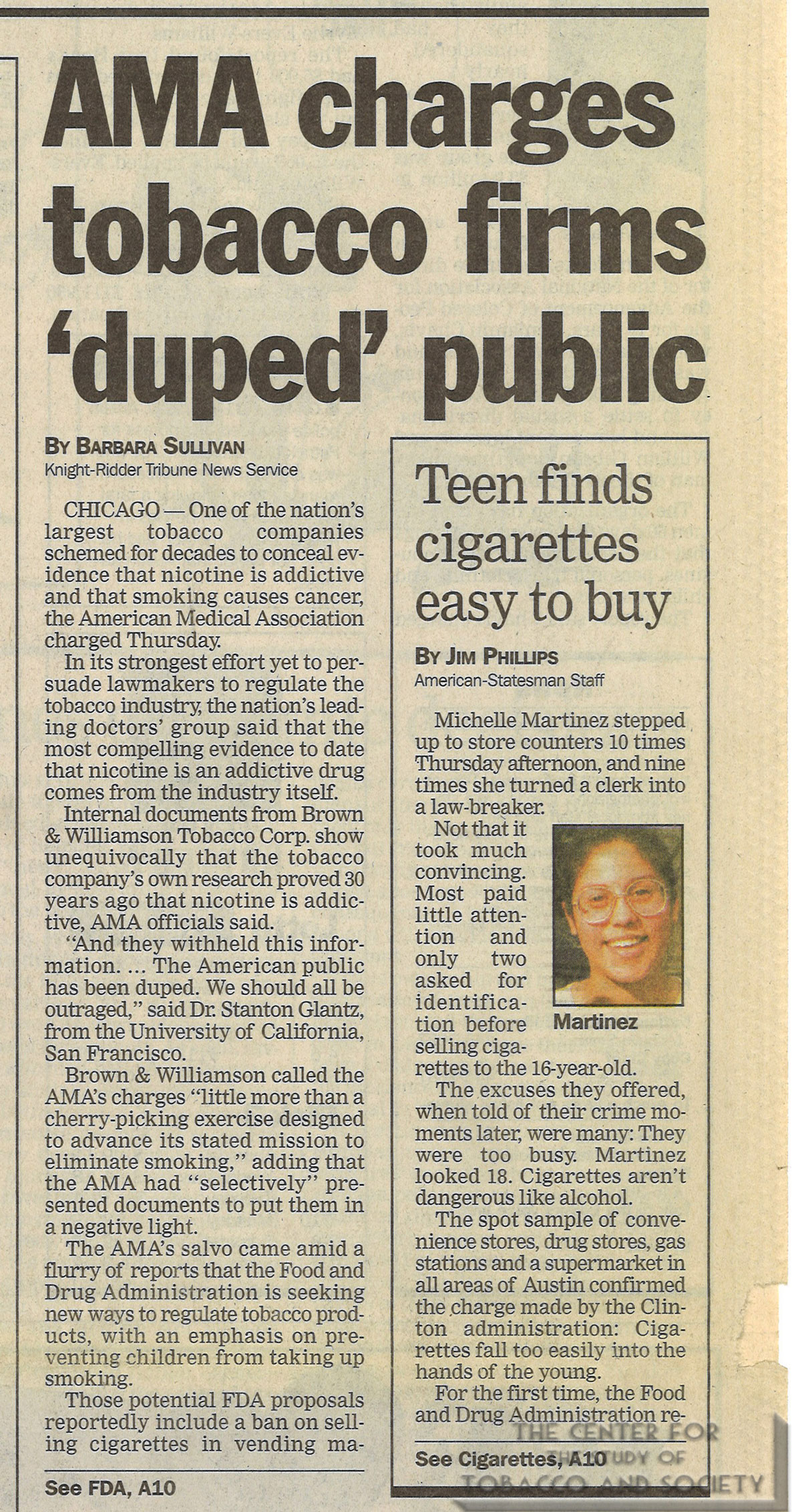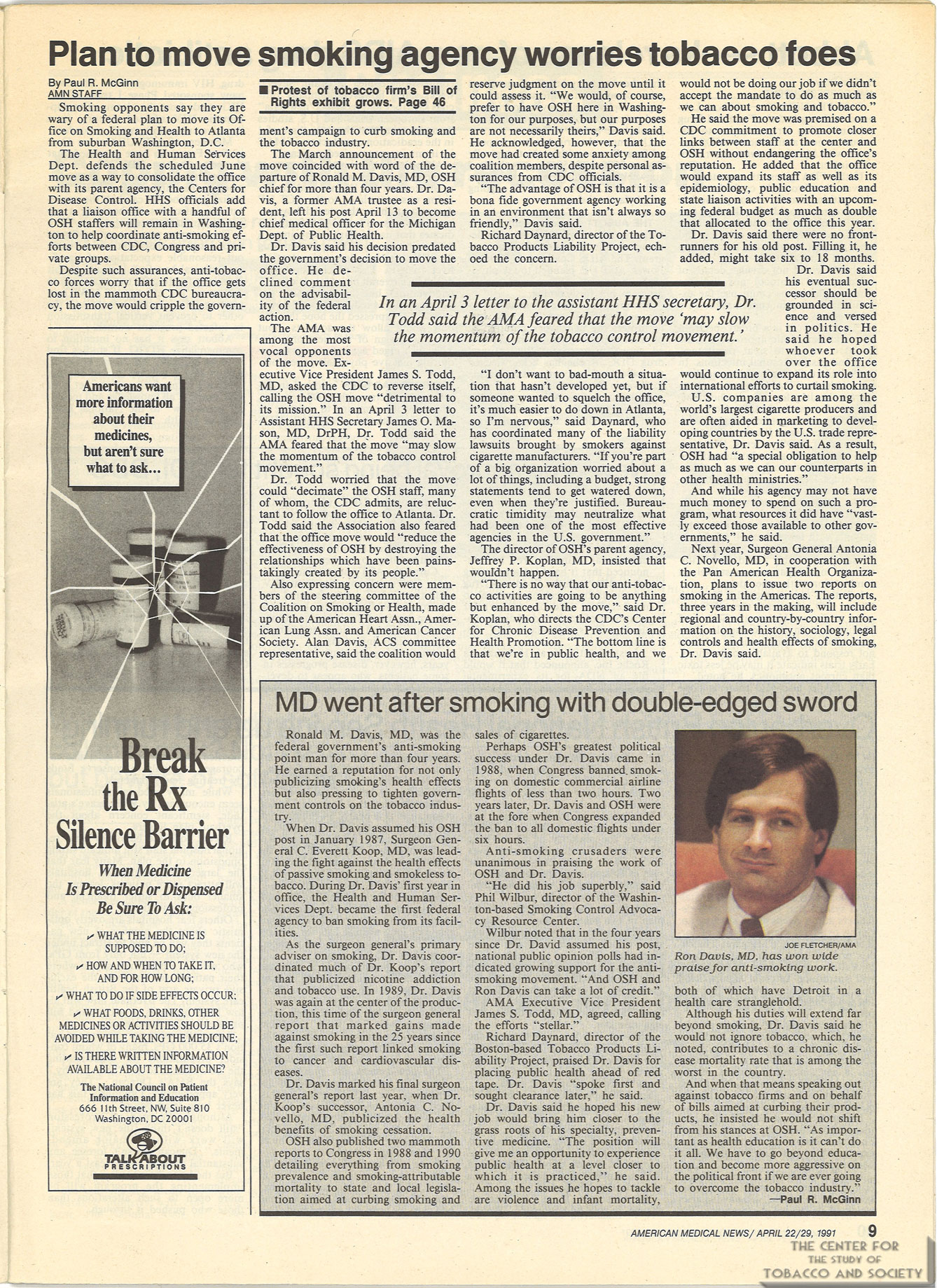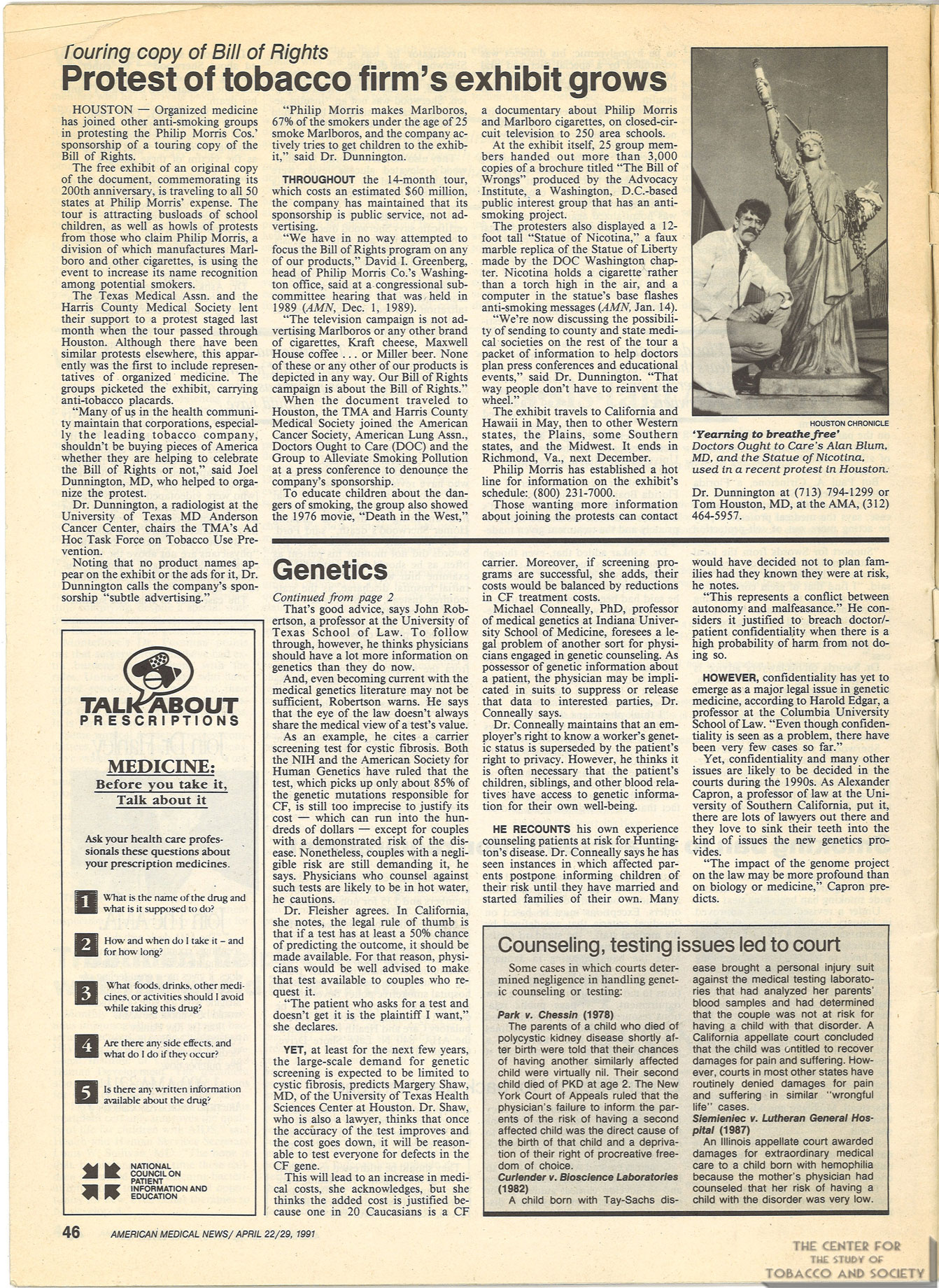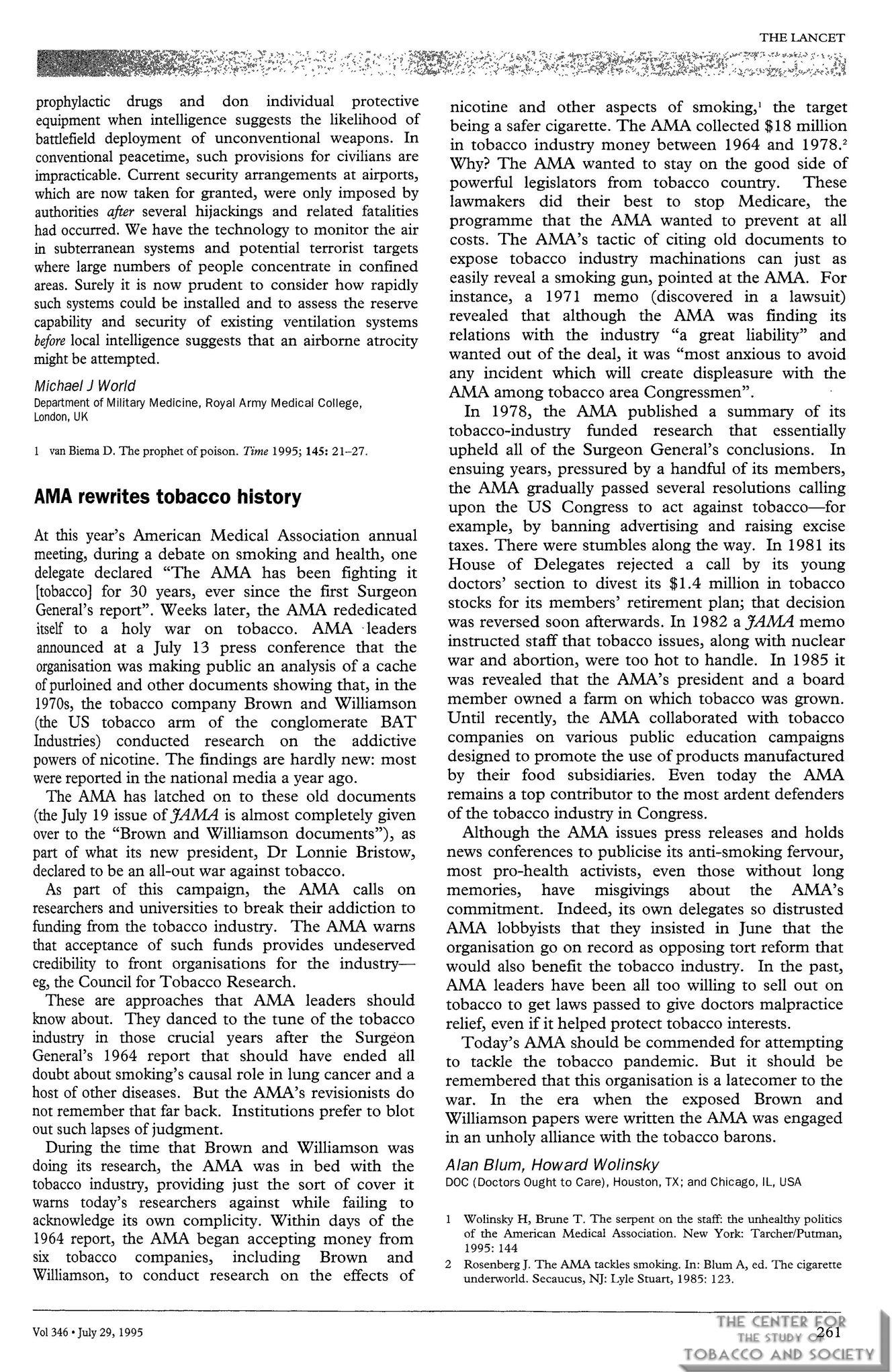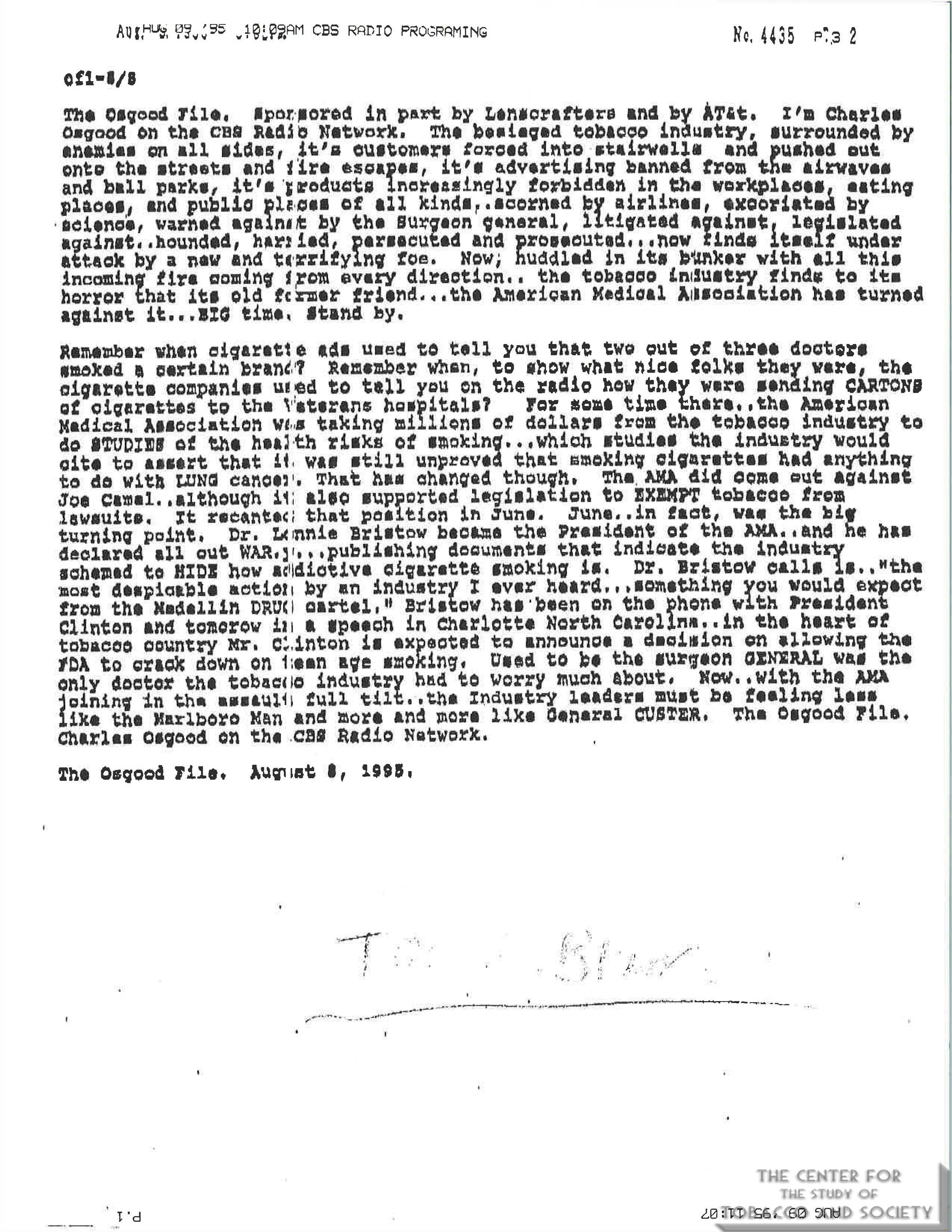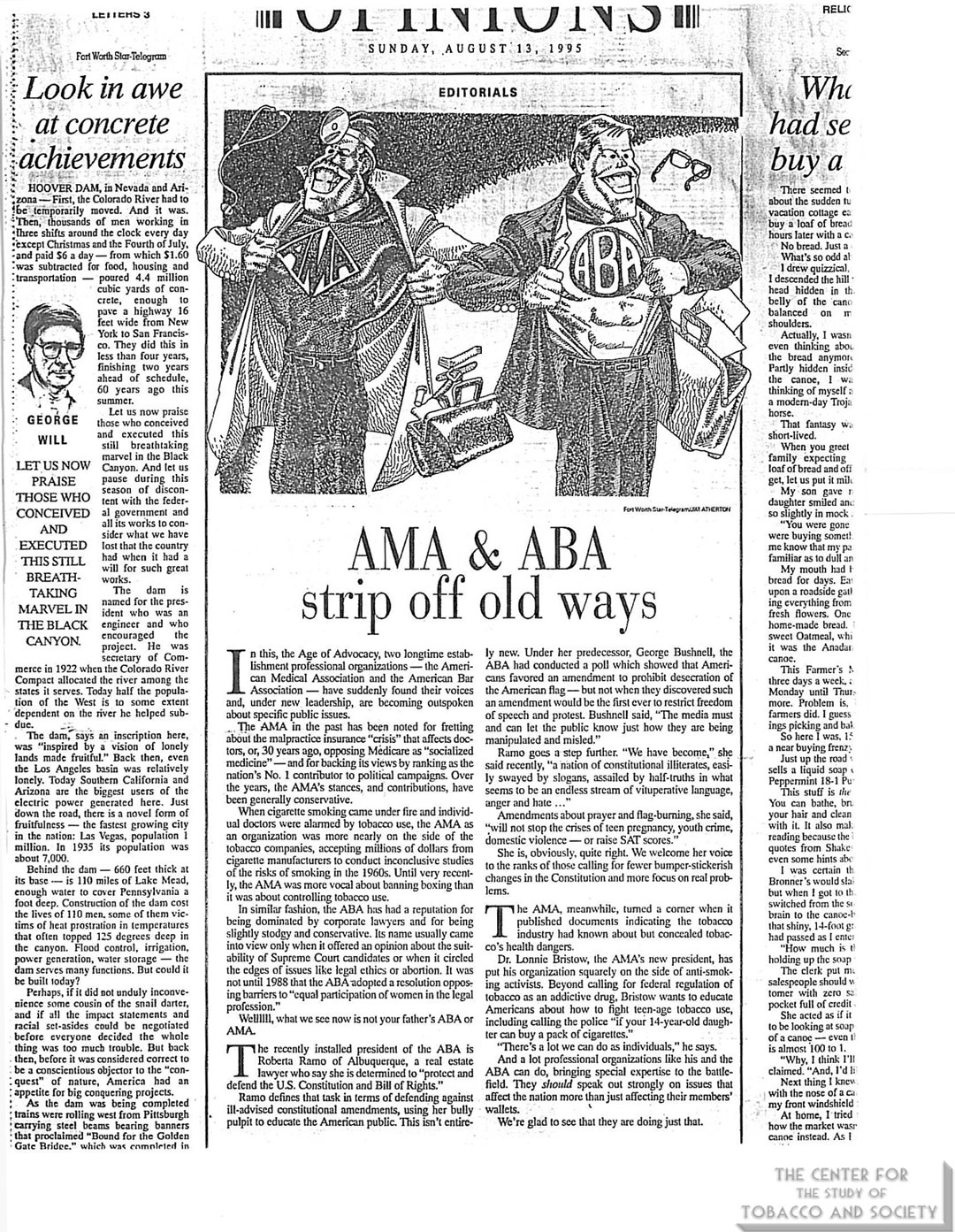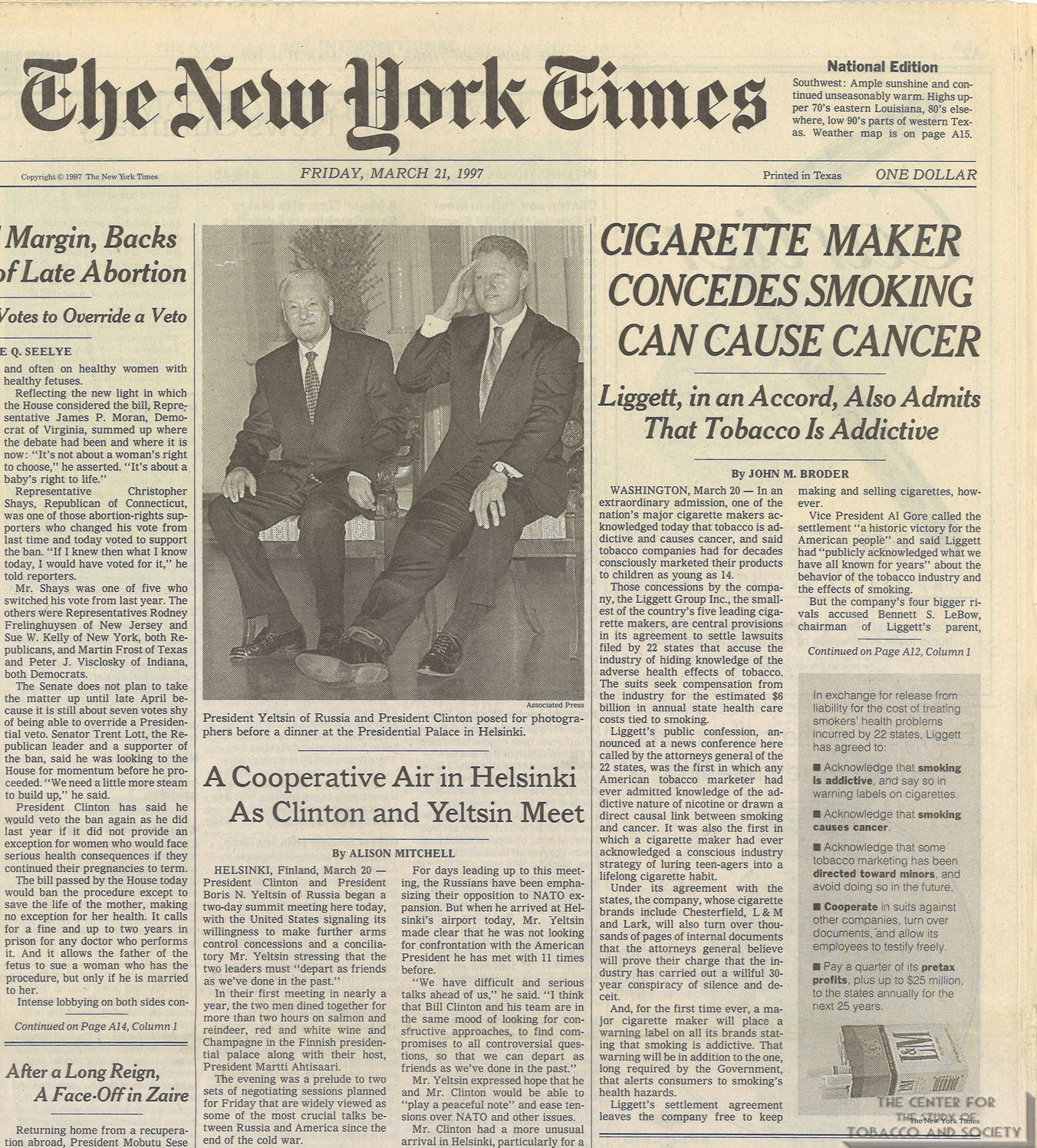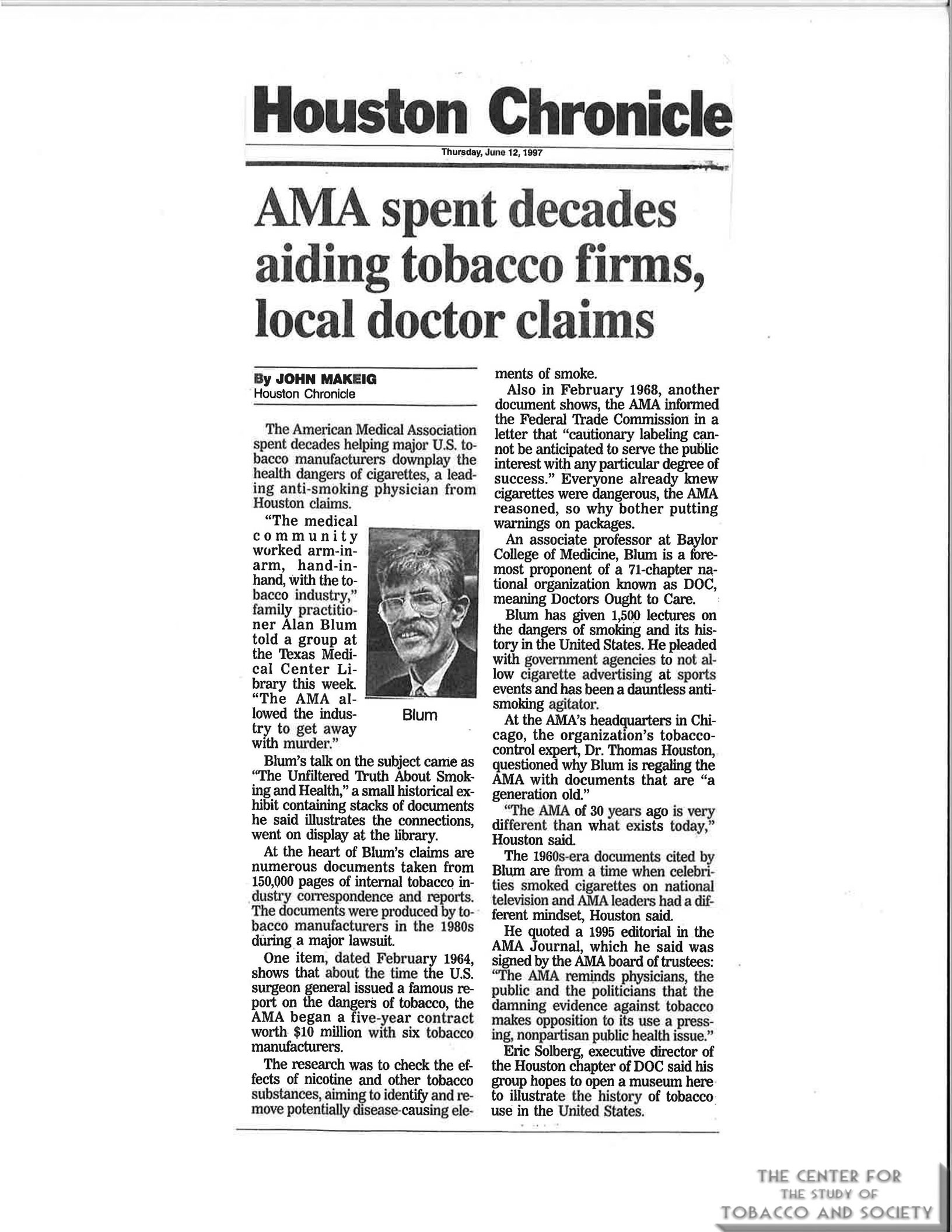AMA Finally Condemns the Tobacco Industry
The Unfiltered Truth About Smoking and Health
The AMA is one of many collaborators of the tobacco industry during the past several decades. But the association’s 14-year silence about the problems associated with tobacco use is matched by no other and represents arguably the most unholy alliance.
In recent years, the American Medical Association has received favorable publicity for its growing role in the public health effort to counteract tobacco use in the United States.
Approximately 150 resolutions on tobacco issues have been passed by the AMA’s House of Delegates on tobacco issues, including support for protection from secondhand smoke to calling for a complete ban on tobacco advertising.
That America’s leading medical organization would take a stand against the leading preventable cause of death and disease as part of its mission to promote “the betterment of public health” should be a given. But the AMA’s involvement in anti-smoking efforts arguably evolved not from a genuine concern for public health but rather from public embarrassment.


